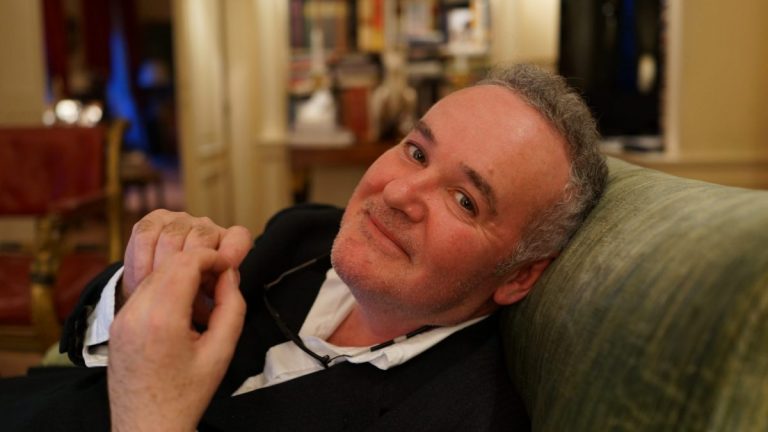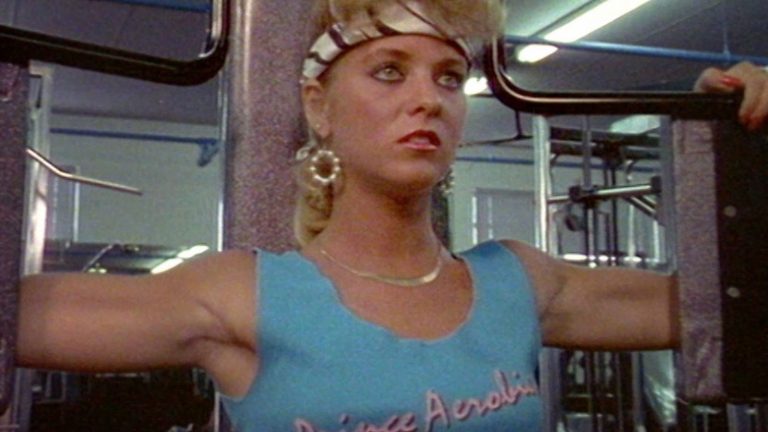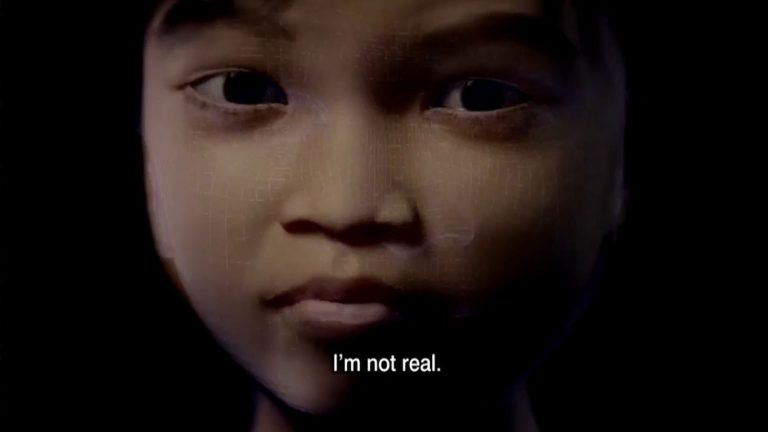Submarine Channel

The Art of Kangaroo and Chocolate: An Interview with Adam Curtis
The Art of Kangaroo and Chocolate: An Interview with Adam Curtis
As a kid, I used to play Concentration a lot, a card game in which players have to find connections between matching cards. The documentary oeuvre of legendary BBC filmmaker Adam Curtis inspired bingos but it also resembles a giant Concentration game trough time and space where weird and fascinating connections between the cards of history are established.
by Davide Banis

Mr. Curtis is not keen on having his picture taken. Here, in a rare pose found on Scenester.tv
Born in England in 1955, Curtis has written and directed documentaries that explore the past in service of the future. His style remixes journalism, art and pop culture leveraging the endless possibilities granted by the BBC archive.
After his collaboration with Massive Attack for the 2013 Everything is Going According to the Plan and his inquiry over militant Islam in the 2015 Bitter Lake, Curtis’ latest work Hypernormalisation –released on BBC IPlayer in October 2016– focuses on “how we got to this strange time of great uncertainty and confusion where those that are supposed to be in power are paralyzed and have no idea what to do.” Extensive parts of the documentary are dedicated to Donald Trump, as one of the most spectacular symptoms of this zeitgeist. Less than a month after its release, Trump became president of the United States, certifying with the seal of (hyper) reality the theory proposed in the documentary.
One year later, I meet with Adam Curtis in Utrecht to discuss this “strange time” we live in and how documentaries can illustrate and analyze it.
How to dramatize something that in traditional
storytelling is undramatizable?
How were you able to release Hypernormalisation so timely?
It was a matter of luck. When you’re a journalist you’re either lucky or unlucky. I hit exactly the right time because it came out after Brexit and before Trump’s election, but I can’t claim that I knew what was going to happen at all. I just sensed something. What I had in the back of my mind was simply a suspicion. And sometimes, as a journalist, you have to acknowledge the feelings that are in the back of your head and start investigating. Often it all starts with a sense of “Mmm, I’m not sure about this…”
At the moment, I’m intrigued by the possibility to do something on Quantitative Easing: where did it go all the money that central banks used to buy government bonds in America and in the UK after the financial crash? But this brings up another crucial question because Quantitative Easing –and money in general– is one of the areas that are almost impossible to film… because there’s nothing to film. You can film the outside of a bank, you can film a computer screen: two shots. I have a word for all these phenomena: they’re “unstorifiable”. You can’t turn them into a story. Tech is the same: it just becomes too complex and boring after a while. It’s a really crucial question: how to dramatize something that in traditional storytelling is undramatizable?

Still from Hypernormalisation
Do you think that virtual reality and other new forms of storytelling may be helpful in this regard?
Virtual Reality is just hype. The main problem with it is that in an age of individualism people hate being constricted whether it’s by elites or a big visor. They want to experience stuff for real. Another big problem is that roughly about two minutes and seventeen seconds after you’re in a VR headset you suddenly realize that everyone else is looking at you and thinking that you’re a twat because you’re moving like this [he mimics goofy movements made by people wearing a VR headset]. Nope, VR is crap, it’s the tech companies desperate to sell something new. And yet again it’s all about the magic of the technology – not about saying anything substantially new. And it raises a wider question that’s been lurking at the back of my mind for a while. Are large parts of the internet just giant scams hidden behind the tech “magic”?
Like does the advertising that is on Facebook and Google actually work?
Real imagination is about reconfiguring
the world in different ways
At the same time, your documentaries can be the way they are, that is: extremely long and -to borrow a term from Janet Murray– almost “encyclopedic” because of the new affordances granted by platforms such as BBC IPlayer or Youtube.
That’s true. For example, Hypernormalisation is really long and it works online because I put chapters in it; you can stop and restart it, with bookmarks. When I showed it in cinemas I was worried that it was too long.
Music has a preeminent role in Adam Curtis’ documentaries. In this regard, he declared: “In the films the inner DJ [that is in me] comes out.” Here’s a track from Hypernormalisation.
I agree with you when you say that the central question for today’s documentary storytelling is: “how can you represent the invisible?”
Actually, to a certain extent, it is easier and more powerful to do it in fiction. Think, for example, of how the film The Big Short was able to portray the financial crash. But yes, that’s the most important task for journalism: to find a form that brings these powerful, hidden things into focus. For example, I was reading the other day about the CEO of a massive private equity company that says that if he sees people from the firm appearing online they’re immediately sacked. What the new powers want is to remain invisible. There are a lot of other things that remain invisible to us. One, for example, is the working class that is really fed up. No one – journalists, think tank people, politicians – saw what was happening out in the depressed areas. All of them failed to see Brexit and Trump coming. We need to find new, imaginative ways to tell these stories.
We need to find the chocolate that allows us to dramatize them.
Wait… what?!
Hahah, that’s how my wife calls it! She says that my mind works along the lines of what she calls “kangaroo and chocolate”. You find something, and that’s kangaroo, and then you find another thing, and that’s chocolate, and you sometimes see links or connections or similarities between them. And by showing that connection or similarity you find a way of encouraging people look at the world around them in a fresh and different way. The facts are all real, but it’s an imaginative way of describing reality that basically says to people “have you thought of looking at things this way”? And have you thought that it might mean this? That’s why I admire South Park so much because it is basically how they structure the stories in their programmes – as they report on the world. It’s an imaginative process. If you show people things that feel truthful and authentic but surprise them in the connections you make, I think this gives them confidence to go out and explore and imagine the world themselves in different ways. Not just accept the rigid
and restricting categories that so much of news journalism repeats all the time. Because that’s what real imagination is about: reconfiguring the world in different ways. And out of that confidence you hopefully give people, might come a part of the solution to our “strange time”. Which is then to tell ourselves a great story about the world we want in the future and where we want to go and convince other people to follow us.
You can’t hide on Facebook or in a VR headset forever
Don’t you think that big stories have inspired people in pretty dangerous ways?
That’s obvious – one of the reasons we are so suspicious of big ideas today is because of the recent past. People say – “look where the powerful stories landed us in the previous century, above all in the horrors of extreme nationalism”. But there is a question that I think needs to be asked very urgently. This is – do grand stories always end badly? Does it always run out of control? Because we need stories to be able to imagine a different future. At the moment, we’re like on an airplane in the brace position, too afraid to look out of the
window. But we need to imagine a different future. Otherwise, we’re going to have a society run by machines and by behavioral psychologists that treat us like consumer-driven zombies. We need to face the forces of history – and to do that in a confident way you have to have a picture of the kind of future you want. Otherwise we will be locked into the static world that the AI boosters and the managerialists want – but that will never last because the forces of history are dynamic. So without a vision of what we want we risk ending up helpless. And then the really scary big stories – driven by nationalism will definitely re-emerge. This is quite an urgent issue I think because you can already see the old nationalism coming back into the frame. In my country, in America and across Europe. The liberals badly need to ask what are their inspiring visions of
the future that can counter this. You can’t hide on Facebook or in a VR headset forever.
This seems like a blend of Marx and The Matrix.
What I am talking about is more relatable to a pre-Marx idea of socialism. A socialism that is about
moral ideas in which economics play a role but it’s not the motor. One of the problem with Marx is that he reduced everything to economic analysis. I think liberals need to start thinking about are moral issues. And I am wondering whether one of the long term effects of the current wave of scandals revealing endemic sexual abuse within the liberal “creative class” might be a new concern about defining and discussing moral questions. Not just relying on economic indicators and “measured outcomes” like all the managers do.
Another good track from Hypernormalisation.
Ok, one final question. Are you working on any new project? It seems to me that the next, natural step for you would be to make something like a 10-13 episodes TV series.
Yes. I’m interested in doing a number of episodes that don’t necessarily have the same length and format. In this regard, I’m inspired by a funny and touching TV series called Atlanta that is about hip-hop. I’m trying to work on that. Unlike Atlanta it will be factual – not fictional.… but the problem is: if you’re trying to argue one single, big idea, can you develop it through a series of episodes? And can every episode be completely different? I’d like one to be a song, just one song. And then the next one a love story. And after that a really hard political theme. Still being one single project. But can you kangaroo and chocolate that? Or would it be too complex? Would you have to simplify your work too much and lose in freshness and originality? I don’t know how to do it. It’s driving me mad. Is there a solution?
Well, I think that would be really important to give your audience some sort of map to not lose the sense of the overall project.
Yes, that’s true. They need to know the boundaries of the thing. A map is necessary.
 Still from Hypernormalisation
Still from Hypernormalisation
And with the idea of the map we go back to the four principles of digital storytelling that Janet Murray indicated us: any digital artifact is potentially procedural (that means made of executable procedures), participatory (it invites human interaction), encyclopedic (it can store high capacity of multimedia information) and spatial, meaning that is possible to navigate through it as a virtual space. Adam Curtis’ works are for sure encyclopedic and, in a way, also spatial –if we intend the term in a looser way. Certainly, they are not -at a narrative level- procedural or participatory. In this sense, they pose essential questions for whoever is trying to innovate in the field of documentary storytelling: should we think that the last two Murray’s principles are more relevant than the first two? In other words, that true innovation doesn’t lie in interactive interfaces or in any other gimmick featured by interactive documentaries but rather in the way storytelling maximizes apparently transparent technological affordances? Certainly, the huge success that Curtis’ documentaries have on platforms like Youtube indicates that it’s an hypothesis worth to be considered.
Davide Banis
Davide is a 24 yo Italian guy. He studied Media Studies in Amsterdam and Philosophy in Milan. When he grows up he wants to become a superhero.



